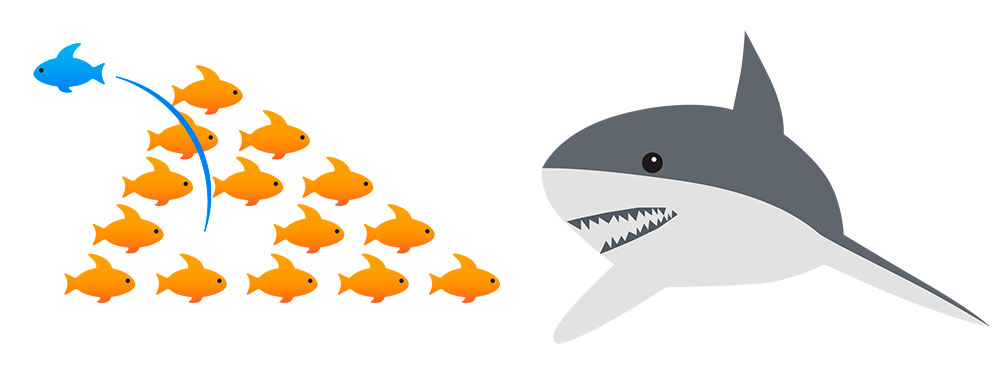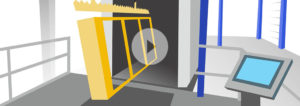
One vital element of component and product manufacturing is the finishing process. Traditionally, finishing methods involved segregating the various phases of an assembly line based upon the parts’ specifications, and using the most common finishing process for each respective section. While initially seen as efficient, this process is not sustainable. When design needs change, this system is exceedingly unagile, making it unadaptable in an ever-increasing culture of lean and just-in-time (JIT) manufacturing strategies. This lean approach has triggered a significant paradigm shift in industrial finishing, resulting in a move towards techniques that provide the optimal finish for each individual part—not just a primary collective denominator. This innovative turn in production methodology presents tremendous opportunity for manufacturers of finished products.
Why the Current System Is Broken
Looking at existing systems, curing factors pose a significant production obstacle. To achieve the best outcome, curing times must be relatively exact; yet cure times are dependent upon the thickness and composition of the respective substrate as well as the specifications of the paint or powder used. Examples: a 12-gauge steel product will require a different cure time than that of a thicker grade steel product. Dissimilar metals, such as steel and aluminum, each necessitates its own unique process because aluminum cools and heats quicker than steel. Each liquid and powder finish has its own cure requirements, often with significant differences but even within the same formula – differences can occur simply due to color.
Current chain-based monorails or power and free systems don’t allow much variation. Operators can only speed up or slow down the entire chain to make adjustments in cure times which often impacts every other process down the line in a domino-like effect. Decrease the cure time and the wash process may not work; load, unload and paint may not be able to keep up; cooling time is shortened – making parts too hot to handle. Increase cure time and items may sit too long in the wash leading to flash rust and manual processes that may be inefficiently staffed as they wait for an item to be loaded, unloaded, or painted. It’s an inflexible system wherein issues cannot be isolated, leading to inefficiencies such as wasted time, product and manpower.
Other problems with older technology includes maintenance or service matters that require an entire production line to go down. Chain systems tend to cause heat build-up in the facility as the chain itself drags heat with it. Working anywhere near the ovens in facilities with chain systems can be very uncomfortable – and likely leads to significant employee turnover! Heating and cooling of the chain also causes it to stretch and ultimately weakens the chain, leading to additional constant maintenance to tighten the chain and the inevitable replacement of the chain. In addition, whenever a chain or a carrier jams, it can lead to additional safety and operational hazards. These include requiring operators to use long poles or other implements to get the system to properly dog or de-dog, to abrupt part sway and to part partial or full dislodgement. Bottom line, chain systems are prone to failures and it is not uncommon to see downtime figures at up to 40% or more.
Finding a New Solution for Finishing
The inability to adapt of these dated systems has generated a shift in finishing processes to an exceptionally innovative and highly flexible solution—the friction-driven tube system from IntelliFinishing. Our versatile conveyor system provides manufacturers with the capability to control variable line speeds for different processes and between processes. Carriers can move both forward and reverse or even to oscillate (common in the wash, for example, or to position a part during unload). The conveyor can also allow products to be lifted vertically or shuttled laterally to reach their next intended process.
Through the recipe system in IntelliFinishing’s easy-to-use software, operators can speed up, slow down, or stop individual track sections, optimizing not only energy efficiency, but curing, treatment and all other process sequences to deliver a better finished product. And unlike welded systems, the sectional construction of our friction-driven tube system along with modular process components allows for much easier modifications to meet future industry demands. Coincidentally, the lack of the usual metal-on-metal noise of chain systems provides for a much quieter and pleasant operational environment for customers who chose an IntelliFinishing system.
At IntelliFinishing, we offer a flexible, programmable approach to finishing, providing advantages such as:
- The consolidation of all paint processes into one system
- The ability to finish a wider variety of parts on a single line
- Increased throughput with the ability to run lines with different products rather than batching by specification, equating to less total work in progress (WIP)
- The capability to move parts backward, sideways, off onto a spur, or even offline without disturbing any other sections, process, or part throughput.
- Sectional adjustability for modular design and control changes
- Greatly improved overall system uptime (99% plus)
Manufacturers See Results with Friction Tube Conveyor System
While this system offers unrivaled efficiency and output benefits, it also provides for a safer production environment. Since their switch to our friction tube conveyor system, our customer, Hytrol Conveyor Company, has not only increased throughput by 30% while reducing overall operational hours—Hytrol has also experienced less downtime and reported a whopping 50% decrease in safety incidents. In addition, JR Custom Fabrication, another IntelliFinishing customer, chose our solution because their focus is on customization, requiring an exceedingly flexible finishing system. Prior to their IntelliFinishing system they outsourced all of their powder finished parts, but had endless issues with finish quality as well as increased costs due to shipping and re-work. Now, they can offer their clients greatly improved quality on their finished products – often at a premium price, giving them a superior edge in their specific market.
Ranging from aerospace to military and defense, from construction to automotive, we’re proud to serve a bevy of industries, including clients such as the largest construction equipment manufacturer (Caterpillar), the largest airplane manufacturer (name withheld), a major U.S. defense contractor with core manufacturing concentrations in weapons and military equipment (name withheld), the largest manufacturer of boom trucks (Altec), and the best known domestic industrial appliance manufacturer (name withheld). Our systems have also been installed for smaller companies that include custom coaters due to their extreme flexibility.
IntelliFinishing: Future-Proofing Manufacturing Finishing
As industrial finishing processes continue to shift, manufacturers and custom coaters must stay relevant and ensure they’re ready to meet ever-changing trends and production strategies. A better finishing process yields countless benefits and could be the competitive advantage necessary to propel organizations into the future. Find out more about our extremely flexible friction tube conveyor system today.
Related posts
1 Comment
Leave a Reply to Ashley Johnson Cancel reply
Search this blog
Get email updates
Archives
- May 2024
- April 2024
- August 2023
- May 2023
- April 2023
- March 2023
- June 2022
- May 2022
- April 2022
- November 2021
- October 2021
- September 2021
- April 2021
- March 2021
- January 2021
- October 2020
- August 2020
- June 2020
- May 2020
- February 2020
- January 2020
- December 2019
- October 2019
- September 2019
- June 2019
- May 2019
- March 2019
- February 2019
- October 2018
- September 2018
- August 2018
- July 2018
- June 2018
- May 2018
- April 2018
- March 2018
- July 2017
- June 2017
- May 2017
- April 2017
- March 2017
- February 2017
- December 2016
- June 2016
- May 2016
- April 2016
- February 2016
- January 2016
- September 2015
- June 2015
- March 2015
- February 2015
- January 2015
- December 2014
- November 2014
- August 2014
- June 2014
- May 2014
- April 2014
- August 2013
- July 2013
- March 2013
- October 2012
- September 2012
- March 2011
- February 2011
- January 2011
- October 2010



I liked that you said that new industrial finishing equipment offers adaptable services that will help efficiently complete the product manufacturing process. I would imagine that manufacturing substantial amounts of product as great speed is necessary for increasing profits within your business. I would be sure using new innovative technology during the finishing stages of manufacturing to help speed up product production and to become successful.